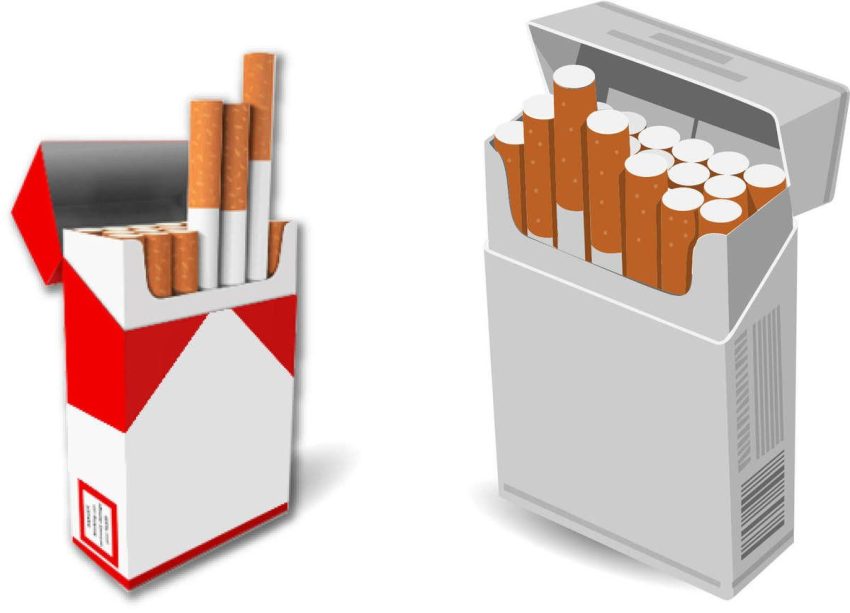In today’s world, sustainability is no longer a mere buzzword but a pressing necessity. With growing environmental concerns and heightened awareness about the impact of human activities on the planet, industries across the board are reevaluating their practices to minimize their ecological footprint. The tobacco industry, notorious for its adverse environmental and social impacts, is also witnessing a shift towards more sustainable practices, particularly in packaging.
Tobacco products have long been associated with negative health outcomes, but their environmental impact is often overlooked. Traditional packaging for cigarettes and other tobacco products typically involves the use of materials like plastic, foil, and non-biodegradable paper, contributing significantly to pollution and waste. However, as consumer preferences evolve and regulatory pressures mount, tobacco companies are increasingly turning to innovative sustainable packaging solutions to address these concerns.
The Need for Sustainable Packaging in the Tobacco Industry
Before delving into the realm of sustainable packaging solutions for tobacco products, it’s vital to understand why such a shift is imperative. The tobacco industry, amidst its significant environmental impact, notably contributes to deforestation and generates substantial non-recyclable waste through its packaging. Amidst these concerns, innovative strategies like incorporating eco-friendly materials or utilizing recycled materials could revolutionize the landscape of printed cigarette boxes and address pressing environmental issues simultaneously.
- Environmental Impact: The production of traditional tobacco packaging materials involves the extraction of finite resources, such as trees for paper and petroleum for plastic. Additionally, the disposal of these materials contributes to pollution, with cigarette butts being one of the most prevalent forms of litter worldwide.
- Regulatory Pressure: Governments and international bodies are increasingly implementing regulations aimed at reducing the environmental impact of industries, including tobacco. Restrictions on single-use plastics and requirements for eco-friendly packaging are becoming more commonplace, pushing tobacco companies to seek sustainable alternatives.
- Consumer Awareness: Today’s consumers are more environmentally conscious than ever before. They are actively seeking products that align with their values of sustainability and ethical consumption. As such, there is a growing demand for tobacco products packaged in environmentally friendly materials.
Innovative Solutions for Sustainable Tobacco Packaging
The journey towards sustainable packaging in the tobacco industry is multifaceted, involving a combination of material innovation, design optimization, and consumer education. Here are some innovative solutions that are gaining traction:
1. Biodegradable Materials
One of the most promising avenues for sustainable tobacco packaging is the use of biodegradable materials. These materials, derived from renewable sources such as plant-based plastics or compostable fibers, break down naturally over time, minimizing their environmental impact.
a. Plant-based Plastics: Bioplastics made from sources such as cornstarch or sugarcane offer a renewable alternative to traditional petroleum-based plastics. These plastics have the advantage of being biodegradable, reducing the accumulation of plastic waste in landfills and oceans.
b. Compostable Fibers: Packaging materials made from compostable fibers, such as bamboo or hemp, are gaining popularity for their sustainability credentials. These fibers decompose into organic matter when discarded, enriching the soil rather than polluting it.
2. Recyclable Packaging
Another approach to sustainable tobacco packaging is to use materials that are easily recyclable. By designing packaging that can be recycled efficiently, companies can help reduce the amount of waste ending up in landfills and oceans.
a. Paperboard Packaging: Switching from non-recyclable materials like foil-lined paper to recyclable paperboard can significantly reduce the environmental impact of tobacco packaging. Paperboard is derived from renewable wood sources and can be recycled multiple times.
b. Aluminum Recycling: While aluminum foil is commonly used in cigarette packaging, it is often not recycled due to contamination with tobacco residue. However, advancements in recycling technologies are making it increasingly feasible to recover and recycle aluminum from used tobacco packaging.
3. Minimalist Design
In addition to choosing sustainable materials, rethinking the design of tobacco packaging can further enhance its eco-friendliness. Adopting minimalist design principles can reduce the amount of material used and make packaging easier to recycle or compost.
a. Reduced Packaging Size: By minimizing the size of tobacco packaging, companies can reduce material consumption and transportation-related emissions. Compact packaging also takes up less space in landfills, further reducing environmental impact.
b. Elimination of Non-essential Components: Removing unnecessary components such as plastic wraps or excess labeling not only reduces material usage but also simplifies the recycling process. Streamlining packaging design can lead to significant reductions in waste generation.
4. Alternative Packaging Formats
Exploring alternative packaging formats can also offer sustainable solutions for tobacco products. From reusable containers to innovative dispensing systems, there are numerous possibilities for reducing the environmental footprint of tobacco packaging.
a. Reusable Containers: Introducing reusable containers for tobacco products, akin to refillable coffee cups or water bottles, can drastically reduce single-use packaging waste. Consumers can refill these containers with tobacco products, eliminating the need for disposable packaging altogether.
b. Dispensing Systems: Automated dispensing systems, similar to those used for bulk food items, could revolutionize the way tobacco products are packaged and sold. By dispensing products directly into reusable containers or biodegradable pouches, these systems eliminate the need for traditional packaging.

Overcoming Challenges and Driving Change
While the shift towards sustainable packaging in the tobacco industry holds immense potential, it is not without its challenges. From technological limitations to consumer perceptions, various factors must be addressed to drive widespread adoption of eco-friendly packaging solutions.
- Cost Considerations: Sustainable packaging materials and technologies often come at a higher cost compared to their conventional counterparts. However, as economies of scale are achieved and consumer demand increases, the cost differential is likely to decrease over time.
- Consumer Acceptance: Educating consumers about the benefits of sustainable packaging and dispelling misconceptions is crucial for fostering acceptance. Highlighting the environmental impact of traditional packaging and the advantages of eco-friendly alternatives can help shift consumer preferences.
- Infrastructure and Logistics: Implementing sustainable packaging solutions may require significant investments in infrastructure and logistics. From sourcing renewable materials to setting up recycling facilities, collaboration across the supply chain is essential for overcoming these challenges.
- Regulatory Support: Governments play a vital role in driving the adoption of sustainable packaging through policies and incentives. By implementing regulations that promote eco-friendly practices and providing support for innovation, policymakers can create an enabling environment for change.
The Path Forward: Collaboration and Innovation
As the tobacco industry navigates the transition towards sustainability, collaboration and innovation will be key to driving meaningful change. By leveraging the collective expertise of stakeholders across the supply chain, from manufacturers and retailers to consumers and policymakers, the industry can accelerate the adoption of innovative packaging solutions.
From biodegradable materials to minimalist design principles, there is no shortage of opportunities for transforming tobacco packaging into a force for good. By embracing sustainability as a guiding principle and embracing a mindset of continuous improvement, the tobacco industry can play a vital role in building a more sustainable future for generations to come.




